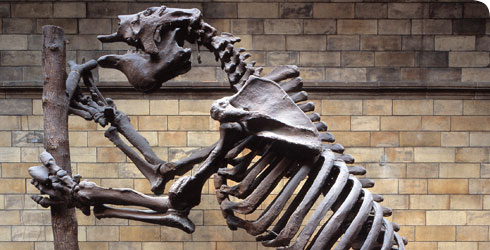Megatherium americanum (giant ground sloth)
Megatherium americanum was one of the largest species of ground sloth, a group of closely related animals once common in the Americas, particularly South America. Its scientific name translates as ‘a big animal from America’.
There were once many different kinds of ground sloth but all are now extinct. They were a widespread and successful group of mammals - their fossils have been found from Patagonia to Alaska. The last ground sloths seem to have died out about 10,000 years ago when humans colonised the Americas.
Species detail

A model of Megatherium as a biped. Sir Richard Owen and William Buckland, Dean of Westminster, collaborated on this reconstruction.
The giant ground sloth is believed to have weighed about 2.5 tonnes, about the same as a female Indian elephant.
It is a distant relative of the living tree sloths. Its ancestors were also tree sloths and these extinct giants retained many anatomical features which reflected their tree-living origins, such as:
- turned-in back feet
- long arms
Megatherium had a slightly larger tropical relative known as Eremotherium.
-

Distribution and ecology
Learn where Megatherium americanum fossils are found, geographically and stratigraphically, and what we know about the feeding habits of ground sloths.
-

Reconstructing the Megatherium skeleton
Giant ground sloth remains were in big demand after the species was first described in 1785. Find out about the skeletal reconstruction on display at the Natural History Museum since 1850.
Images
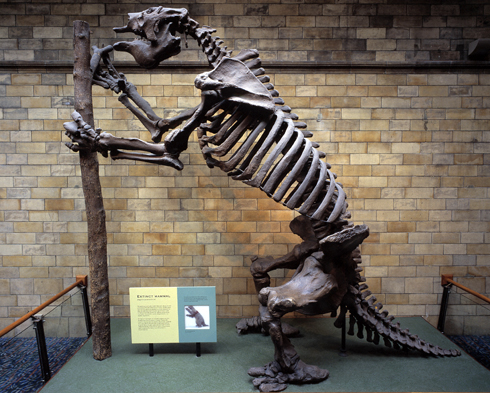
Plaster cast of the skeleton of Megatherium americanum on display at the Natural History Museum, London. It was reconstructed from two partial skeletons, one preserved at the Museum, and the other formerly in the collection of the Royal College of Surgeons of England but destroyed by bombing in the Second World War.
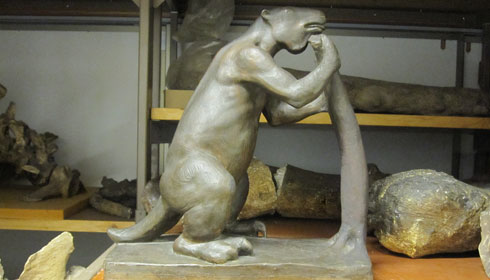
A model of Megatherium as a biped. Sir Richard Owen and William Buckland, Dean of Westminster, collaborated on this reconstruction. It is stored at the Natural History Museum and may have been a template for the skeletal reconstruction on display here.
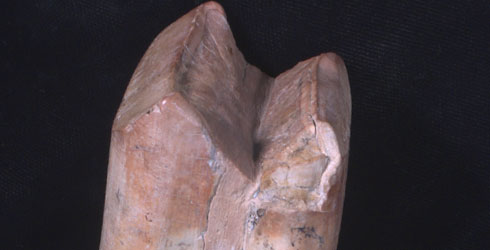
A Megatherium tooth fossil from Argentina, showing the biting surface.
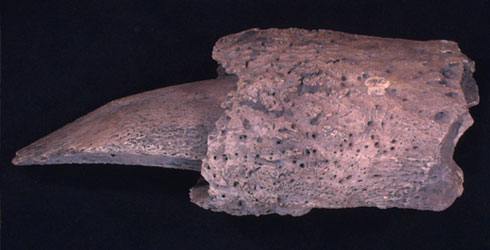
A toe bone (phalange) fossil from the fore foot of Megatherium, showing the bone core of one of the front claws. The claws themselves were much longer than the bony base. This fossil is the the collections at the Natural History Museum and came from Lujan, Argentina.
